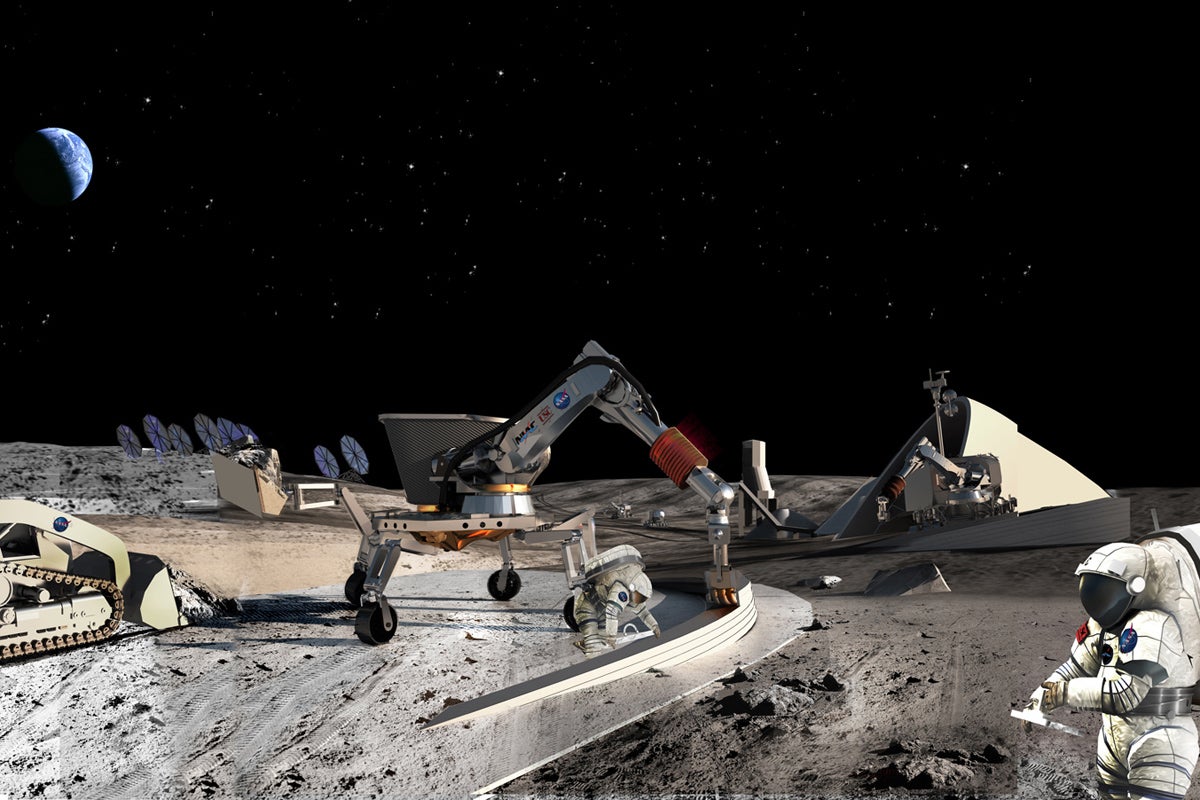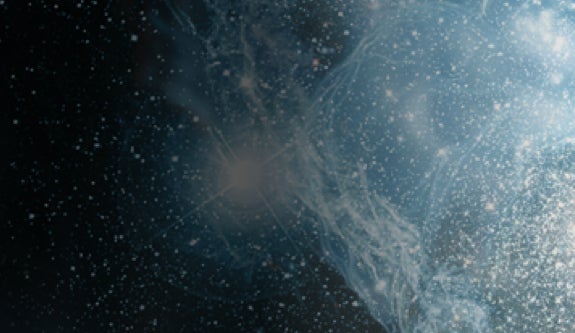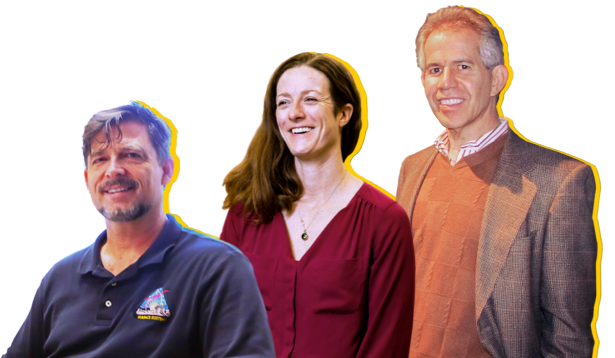With space set to be the site of the next “gold rush,” UCF researchers are helping prospect a spot for a major first step in the upcoming scramble – creating a lunar mining outpost.
The work will be funded through a recently announced grant from NASA’s Innovative Advanced Concepts program.
The project entails UCF researchers working with TransAstra Corp. to study an economical way to mine ice on the moon.
The project entails UCF researchers working with California aerospace company TransAstra Corp. to study an economical way to mine the plentiful supply of ice known to exist in the polar regions of the moon. The principal investigator of the project is Joel Sercel, president of TransAstra. Sercel holds a doctorate in mechanical engineering from The California Institute of Technology.
TransAstra is developing the technology to mine the ice. The UCF team, comprised of Kevin Cannon, a postdoctoral scholar in UCF’s Department of Physics, and Dan Britt, a UCF physics professor, will provide expertise on site selection, lunar-terrain characteristics, and properties of lunar ice deposits.
While ice may be taken for granted on Earth, in space it serves as a valuable resource when turned to water and split into hydrogen and oxygen to become rocket fuel propellant that can be stored in depots on the lunar surface.
“These depots are the gas stations that allow you to have infrastructure and economy in space,” Cannon says. “Getting that water out of the ground is a first step because it’s just so expensive to launch it from Earth. So, you really cut down on the cost of space development by mining it on the moon.”
The researchers expect the United States to be back on the moon within five years – with at least robots beginning the mining operations – and then actual outposts to be created within 10 years. Renewed interest in the moon has included recent efforts by China and Israel to land there, as well as from many commercial companies working on plans to mine and develop the moon.
In space ice is a valuable resource because it can become rocket fuel propellant that can be stored in depots on the lunar surface.
A mining post would have to balance a need to be close to a region cold enough to harbor frozen volatiles such as water but also near sunlight, a vital source of energy for solar-powered equipment doing work in space.
Such an outpost could have multiple components with a power source located on a sunlit peak, mining operations in topographic lows, and storage facilities for mining vehicles and propellant, the researchers say.
One of the challenges will also be building on lunar permafrost, which is solid until it’s hot, and then it begins to melt.
Britt says overcoming this challenge could involve using similar building strategies to those used in polar regions on Earth, such as in Alaska, that involve using insulation or building below the permafrost.
Establishing an outpost on the moon ensures humans’ continued journey to expand beyond the farthest known limits, Cannon says.
“There’s been this kind of stasis in terms of getting humans out of low Earth orbit and actually starting to develop space,” Cannon says. “I think this is a small first step, but it’s important to establish something like an outpost that is semi-permanent. I think that goes a long way to getting people into space to stay sustainably.”
“If you want to change the parameters of how human civilization lives, you have to explore.” – Kevin Cannon, UCF postdoctoral physics scholar
Britt likened the renewed push for space development to the Age of Discovery that took place from the 1400s to the 1700s.
“If you want to change the parameters of how human civilization lives, you have to explore,” he says.
UCF is a leader in planetary science and off-world geology. Britt is director of the Center for Lunar and Asteroid Surface Science, a part of NASA’s Solar System Exploration Research Virtual Institute housed at UCF. His work has been incorporated in multiple Mars landers, and he is co-investigator on NASA’s Lucy, New Horizons, Mars Pathfinder and Deep Space 1 missions. Asteroid 4395 is named DanBritt after him in recognition of his contributions to asteroid research. He is a UCF Pegasus Professor and earned his doctorate in geological sciences from Brown University. He joined UCF in 2003.
Britt helps oversee UCF’s Exolith Lab with its founder Cannon. The lab is a nonprofit extension of the Center for Lunar and Asteroid Surface Science that produces simulated lunar, planetary and asteroid surface material for use in scientific research.
Cannon received his doctorate in Earth, environmental and planetary sciences from Brown University. He joined UCF in 2017 and studies the composition of small planetary bodies and Mars with an interest in accessing the resources they may provide. In addition to running the Exolith Lab, Cannon supervises a number of UCF undergraduates in applied research projects, including planetary-resource extraction and plant growth in simulated regolith. His work has been published in numerous journals, and he can be found on Twitter at @kmcannon.







